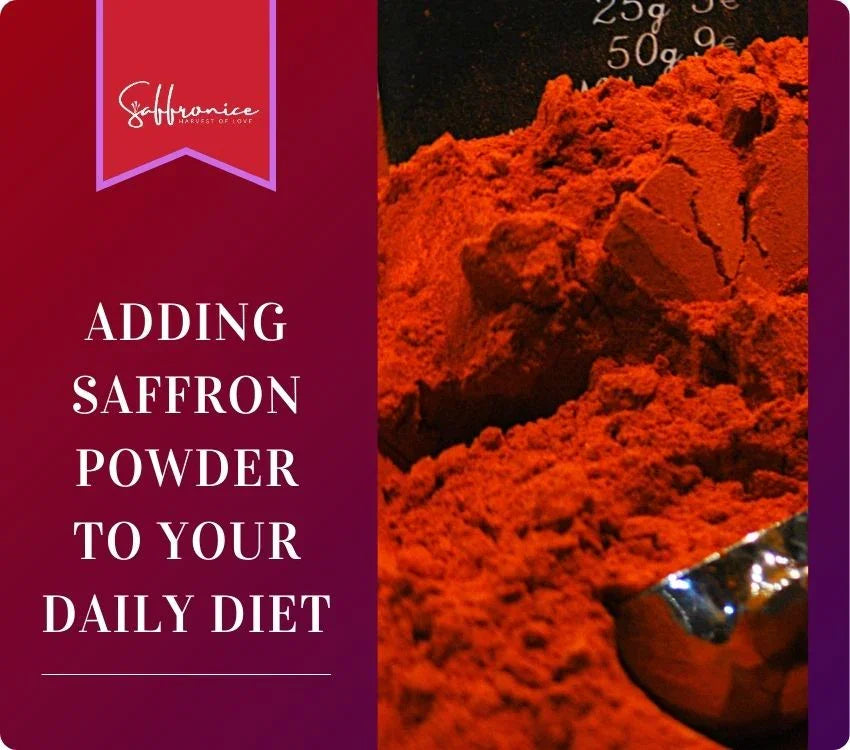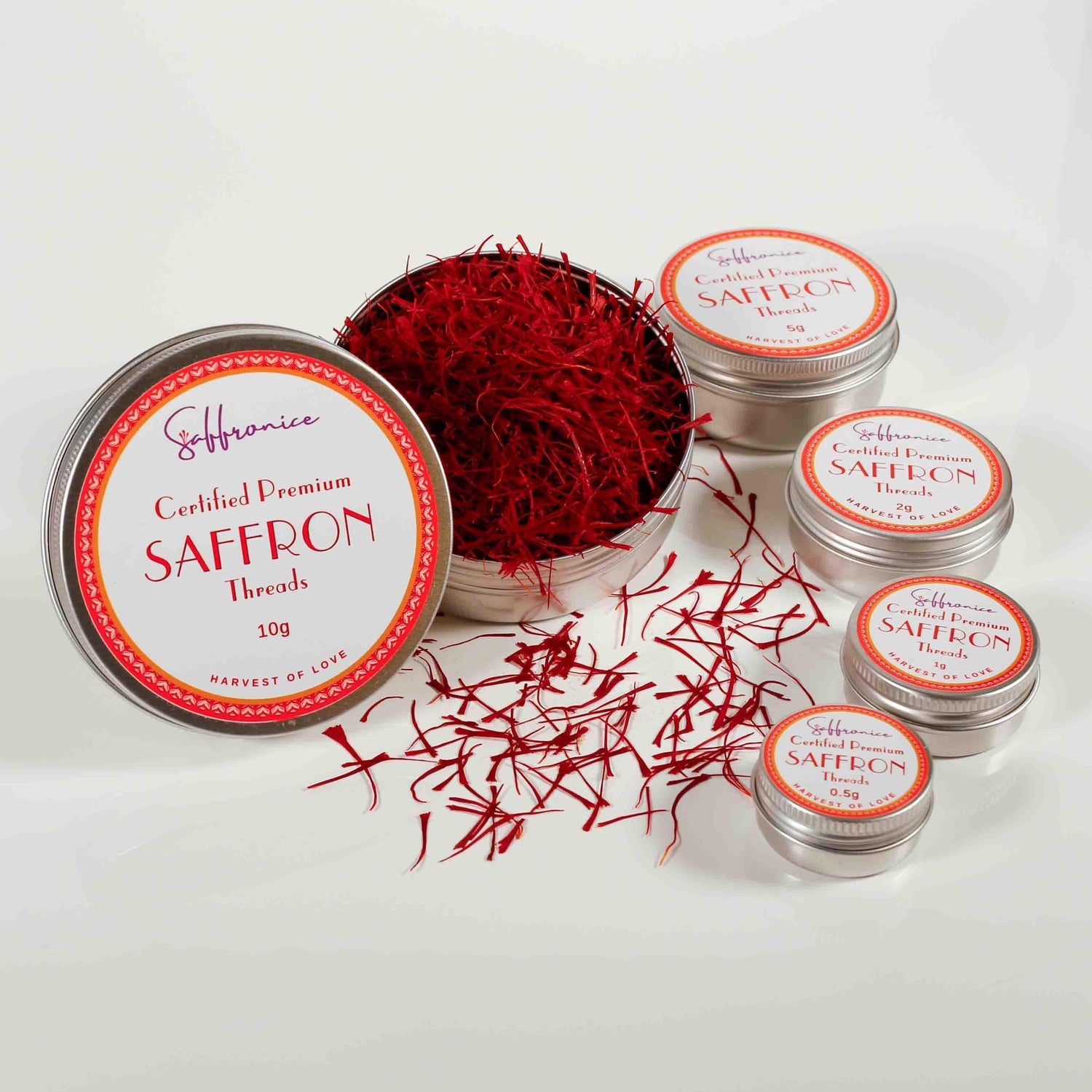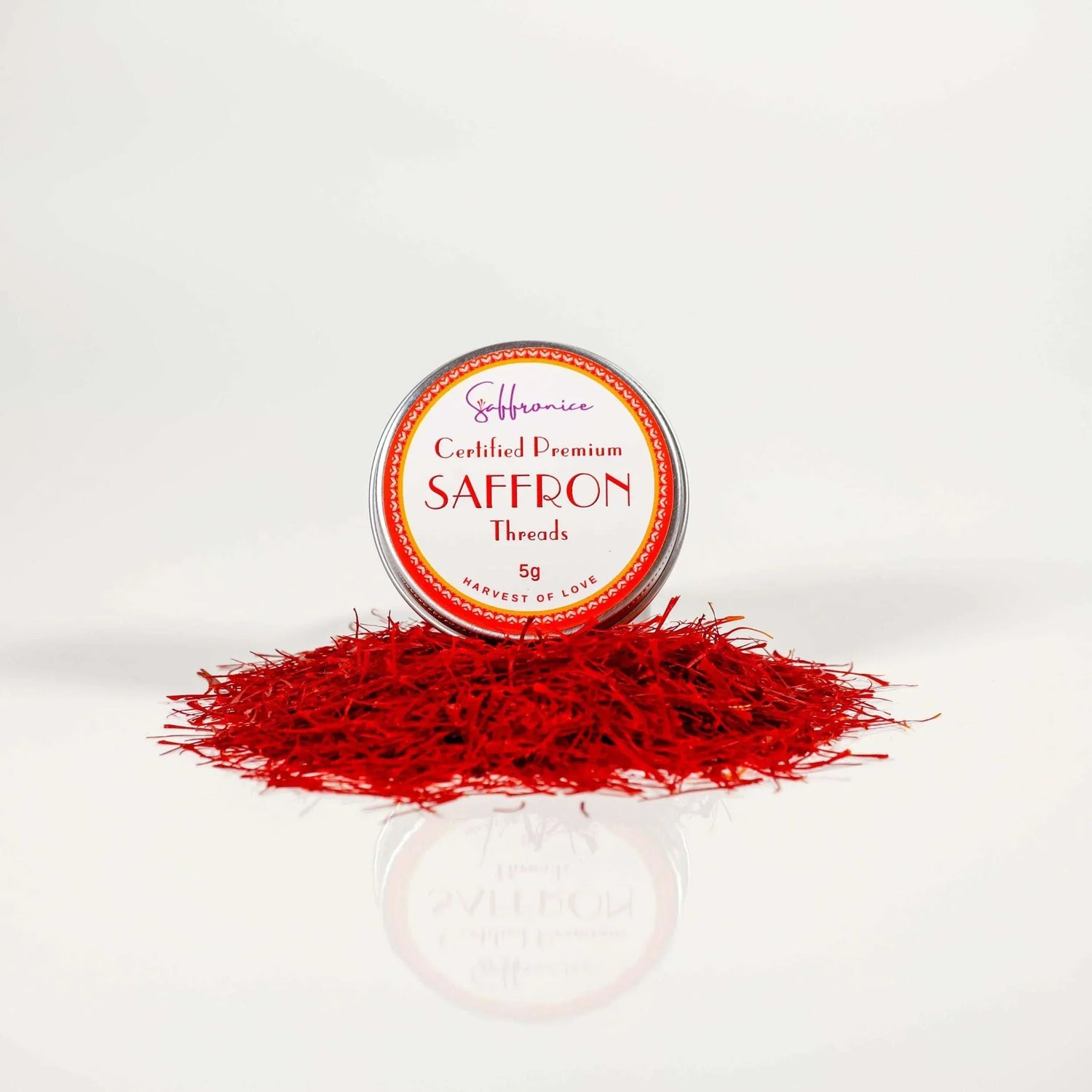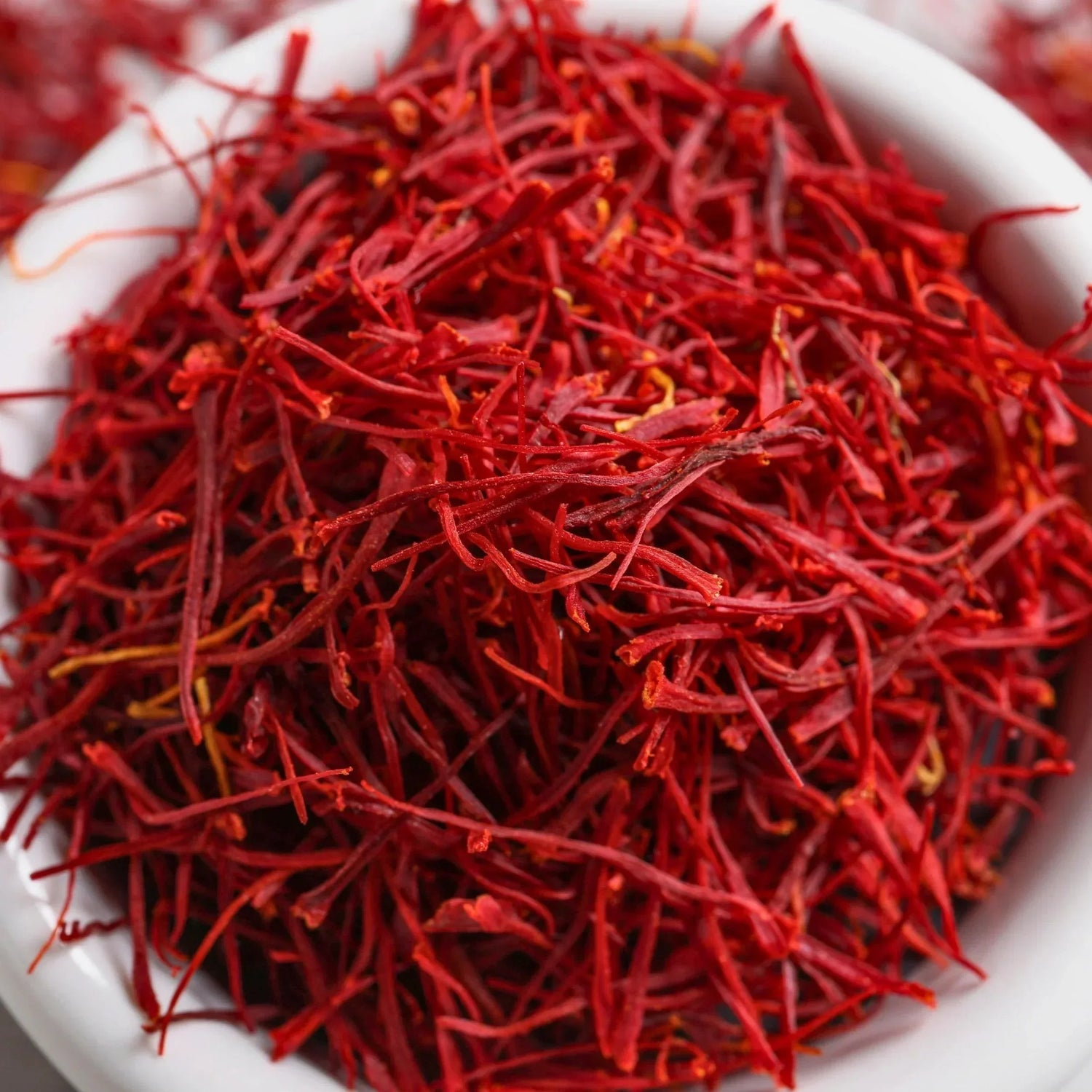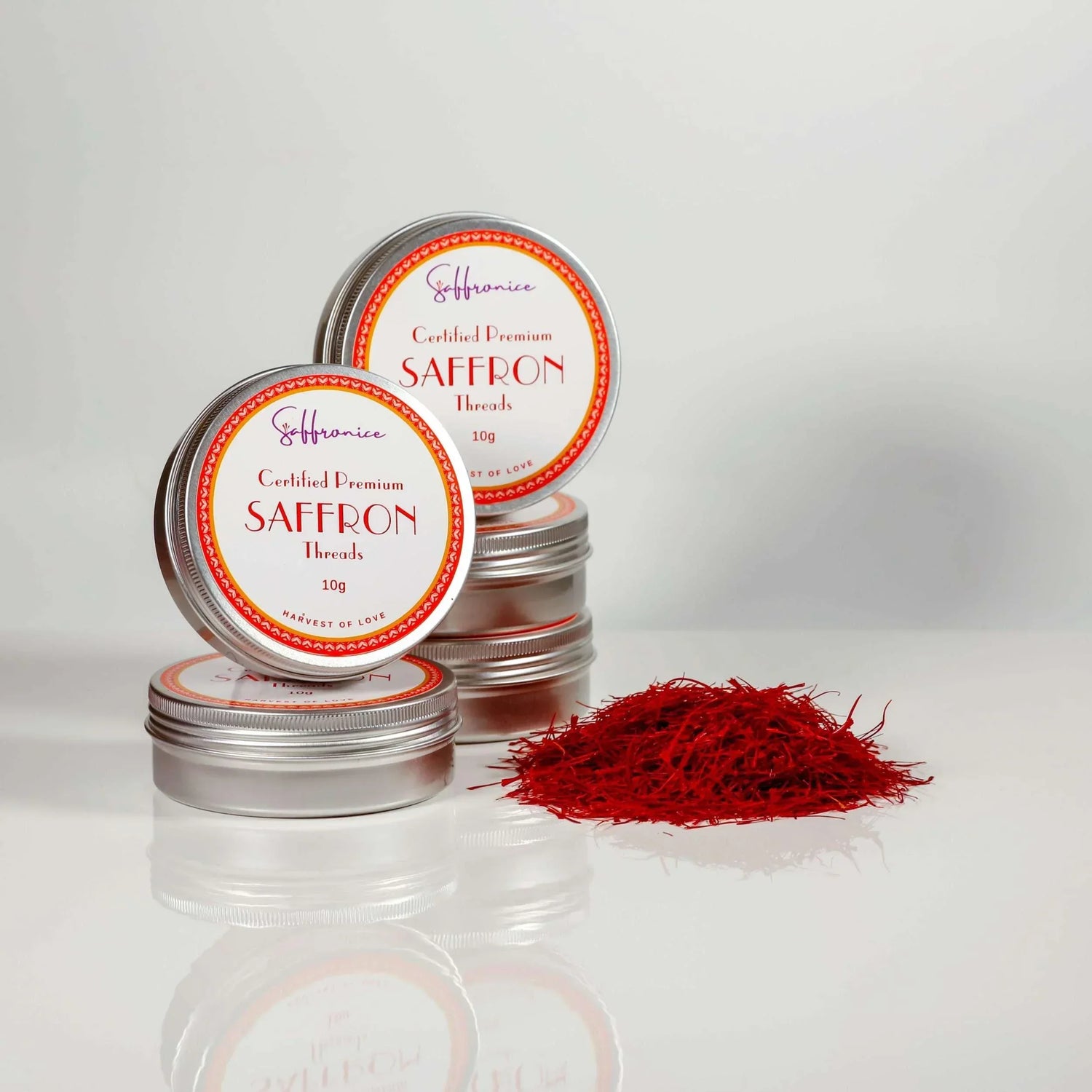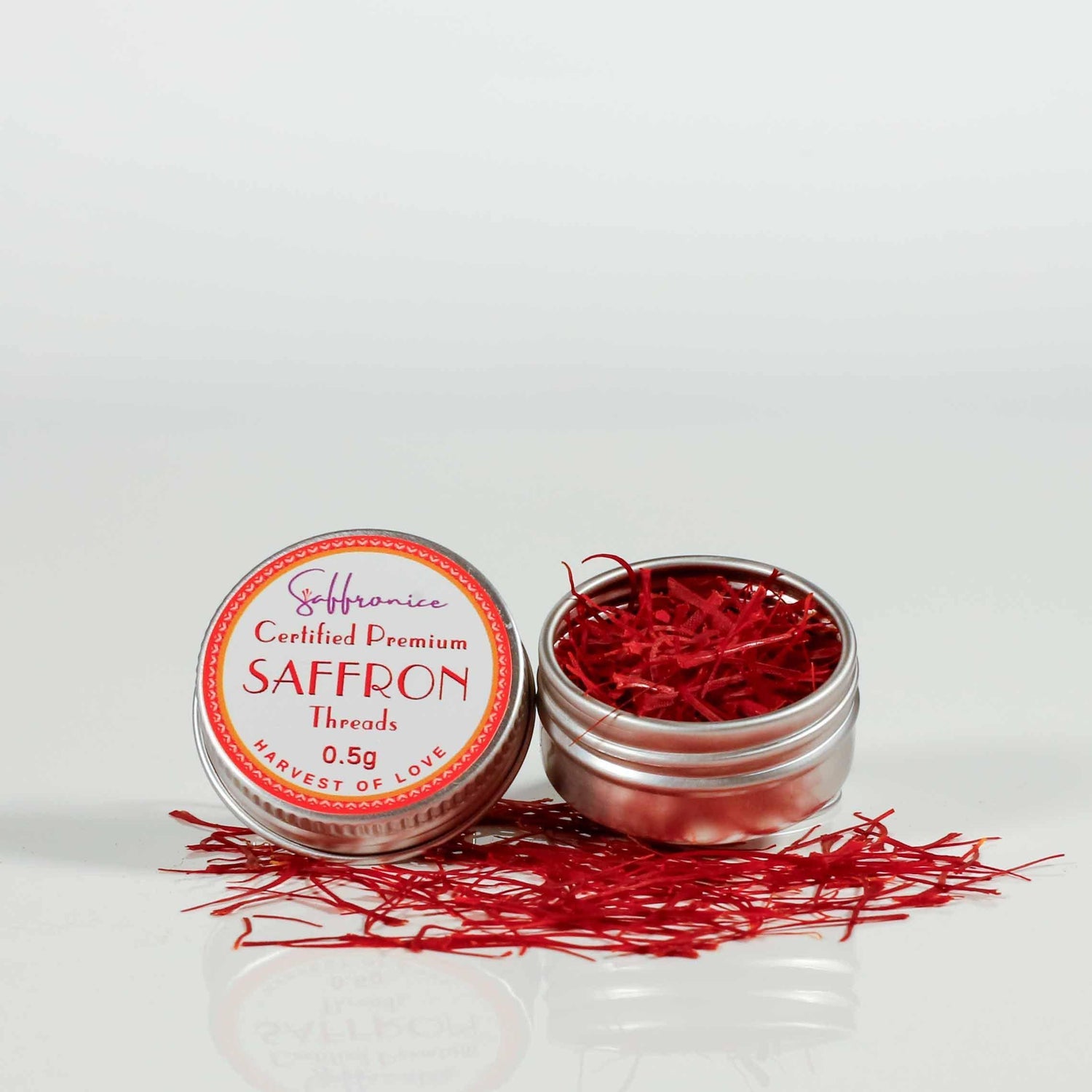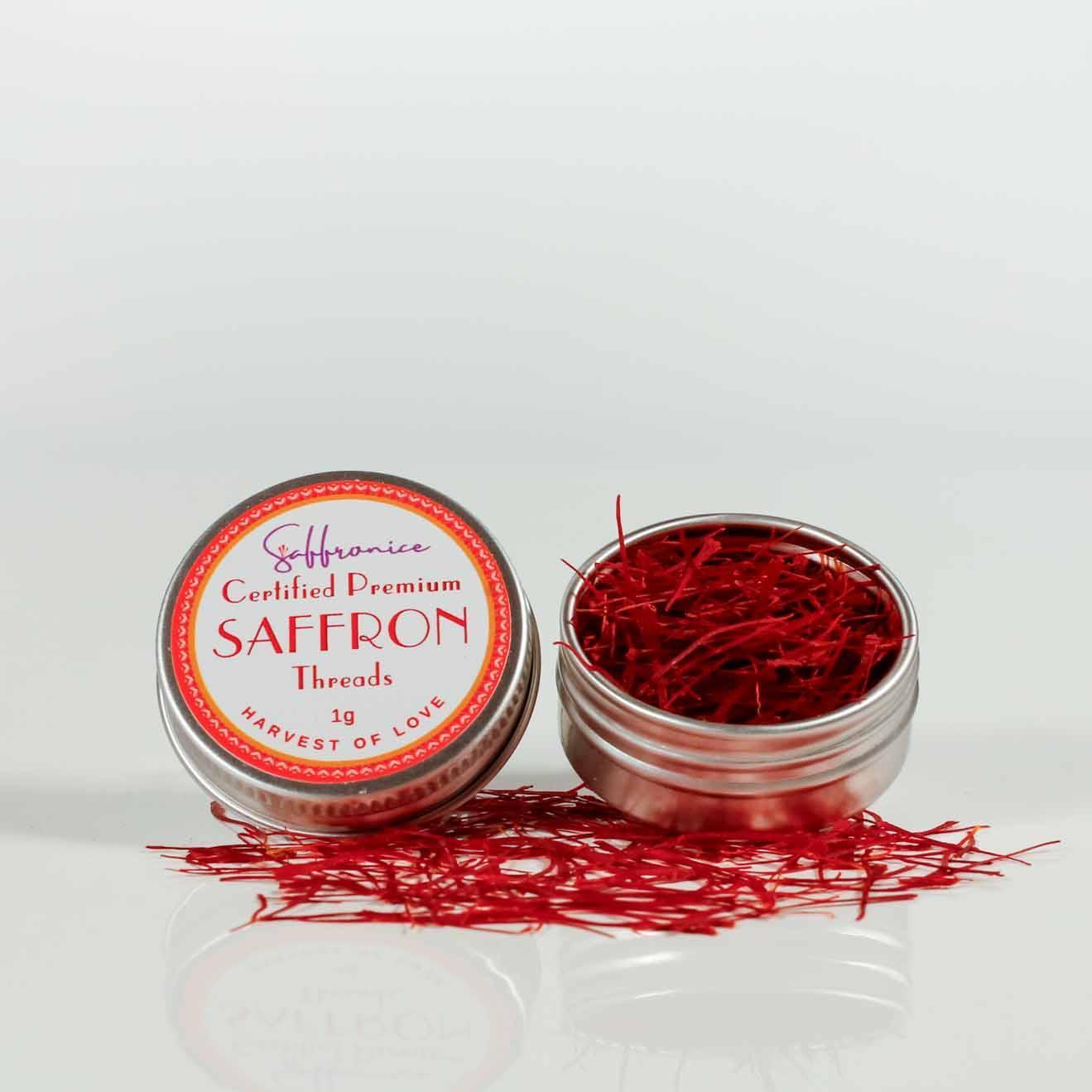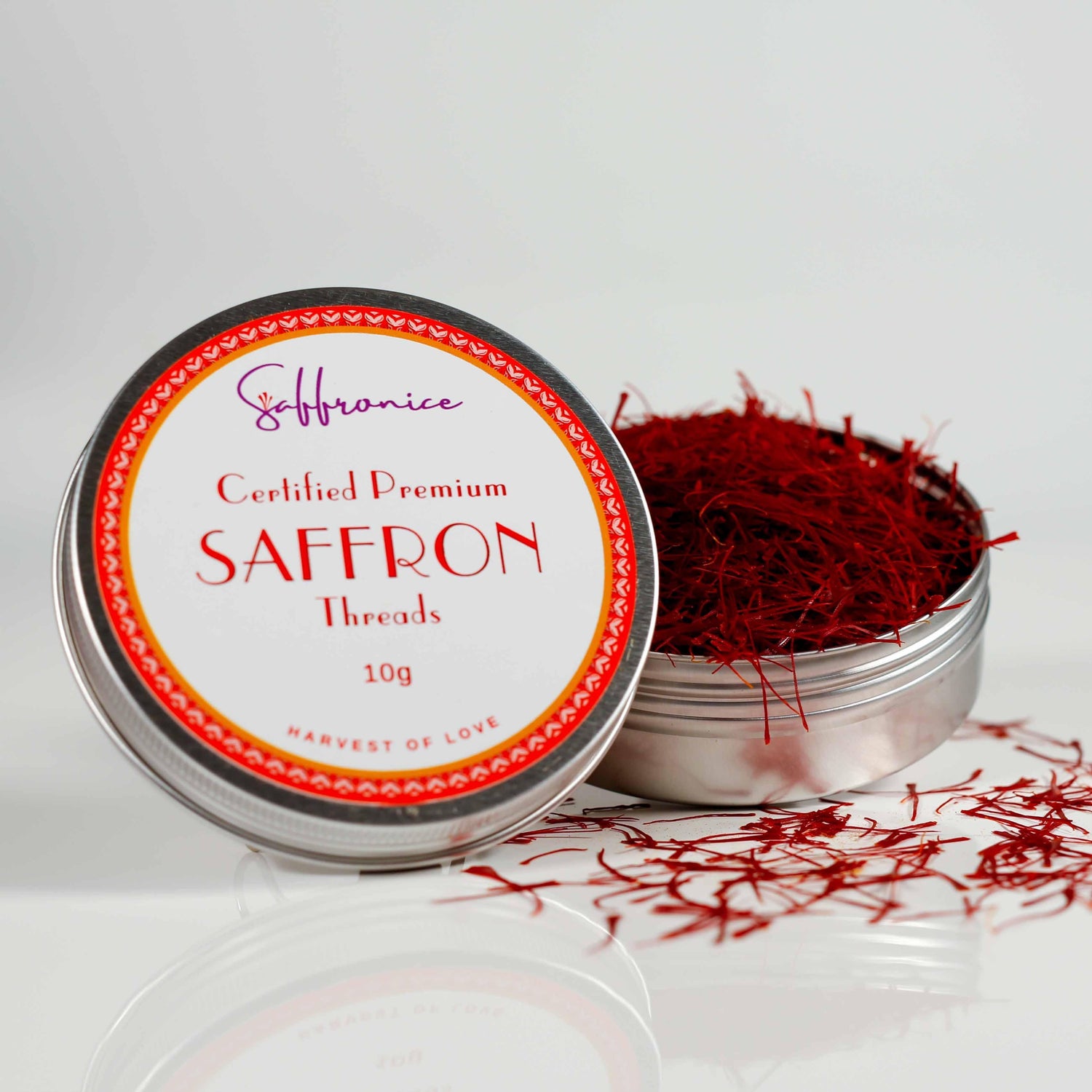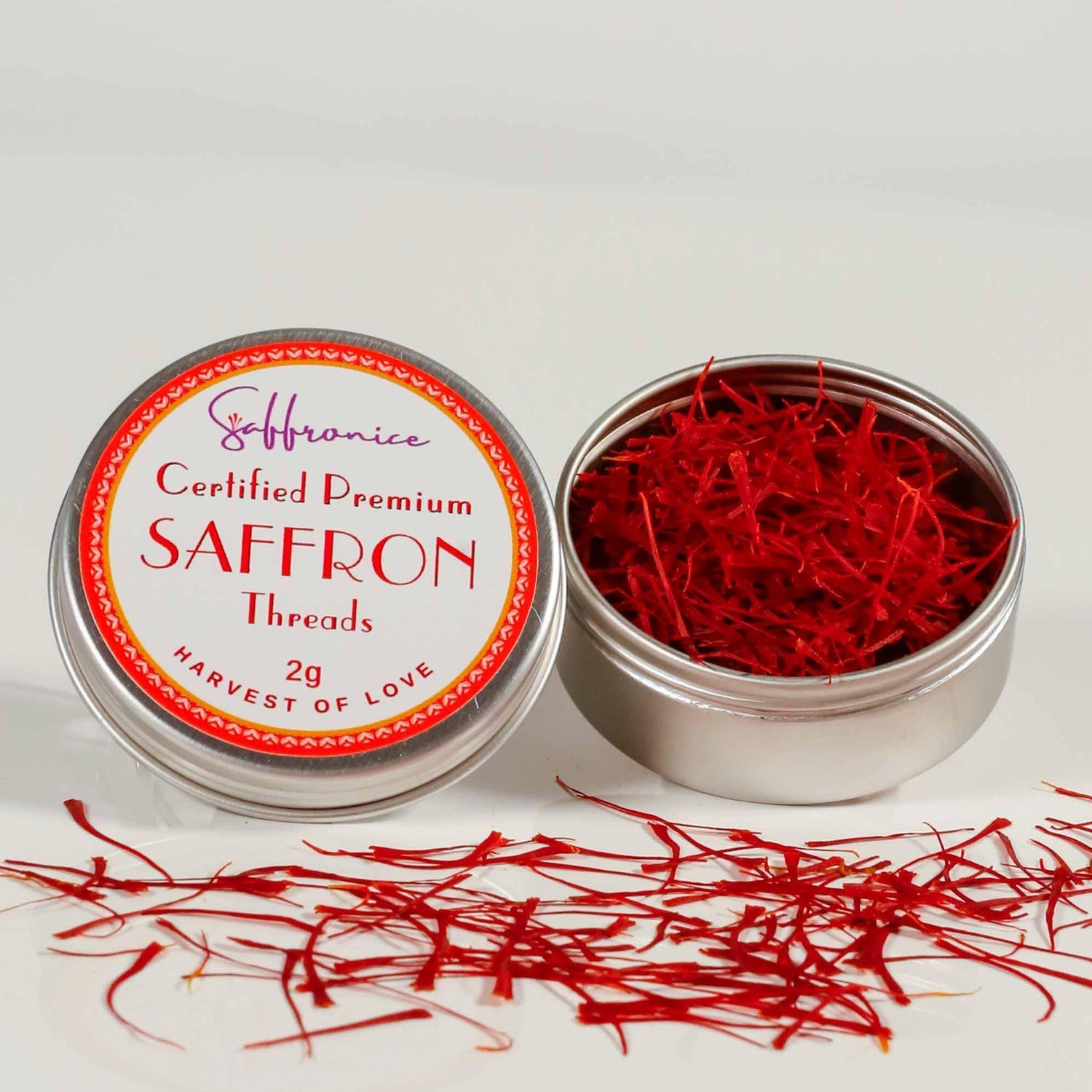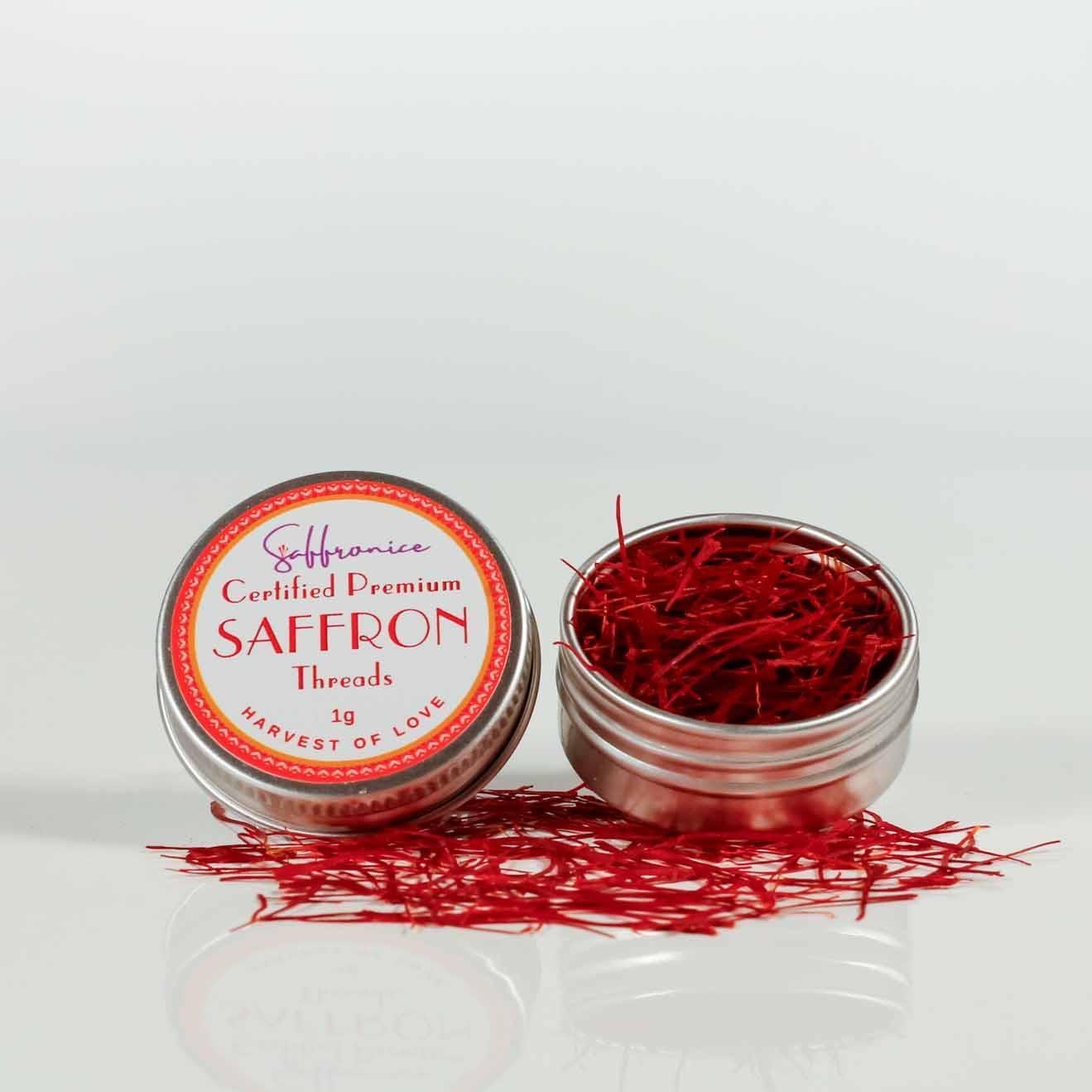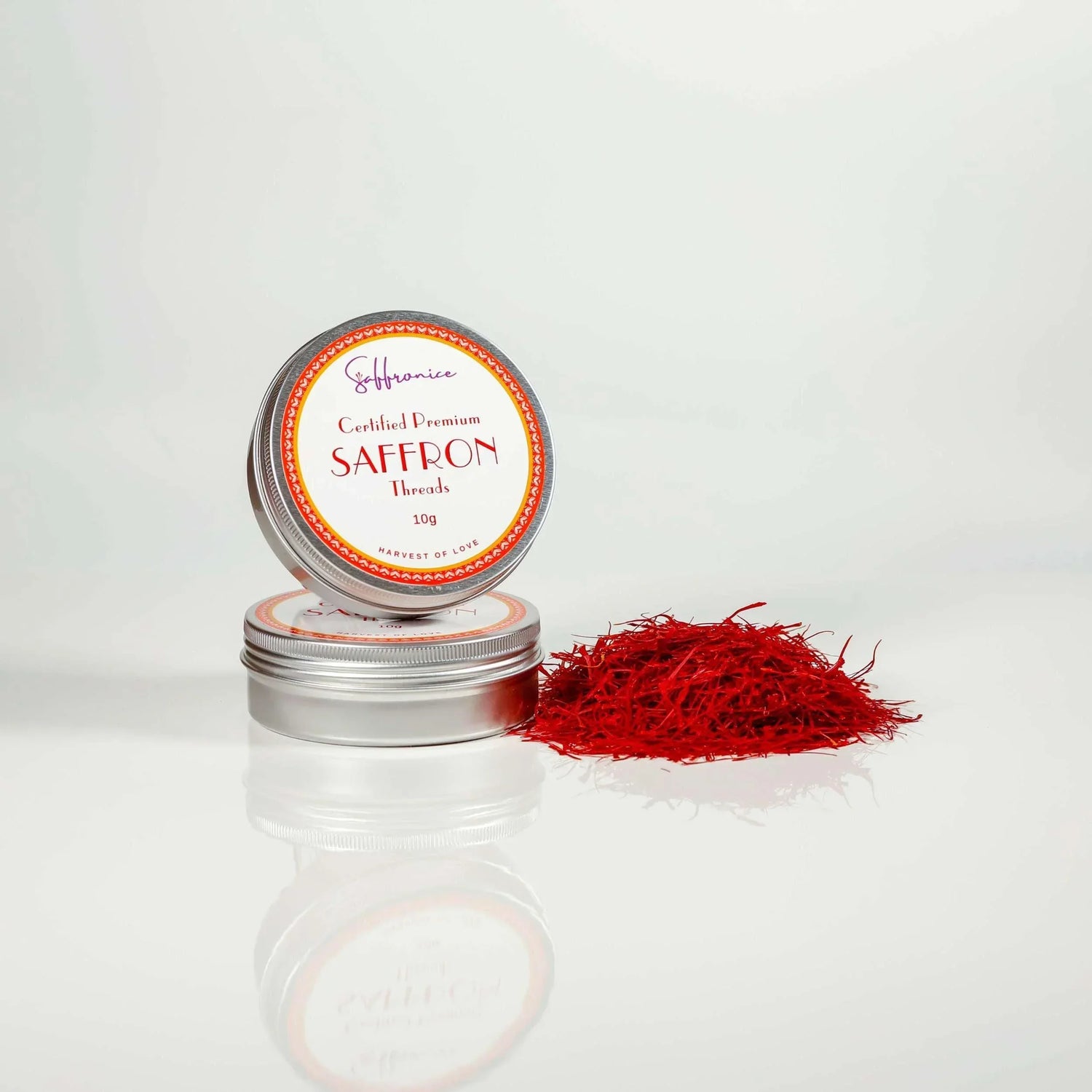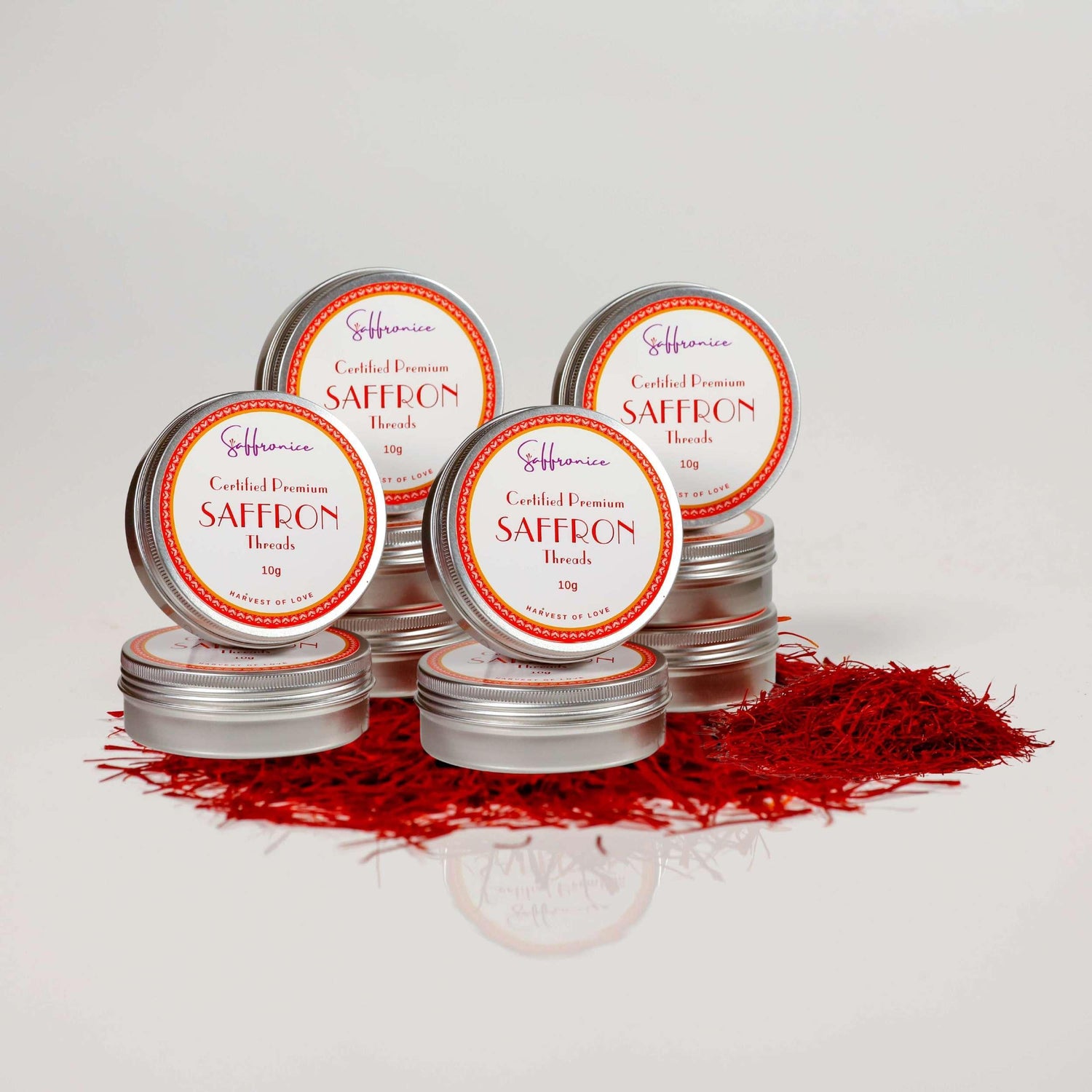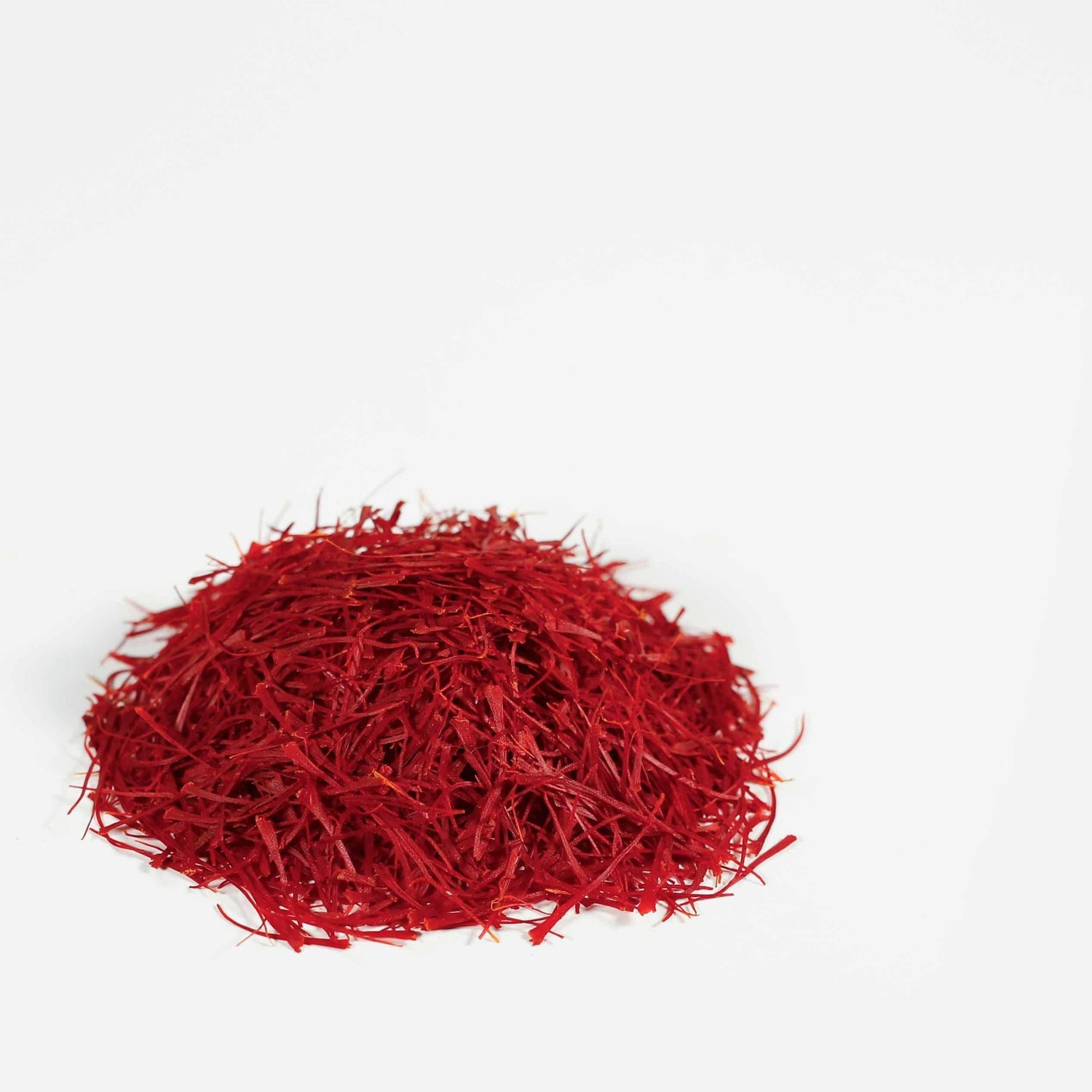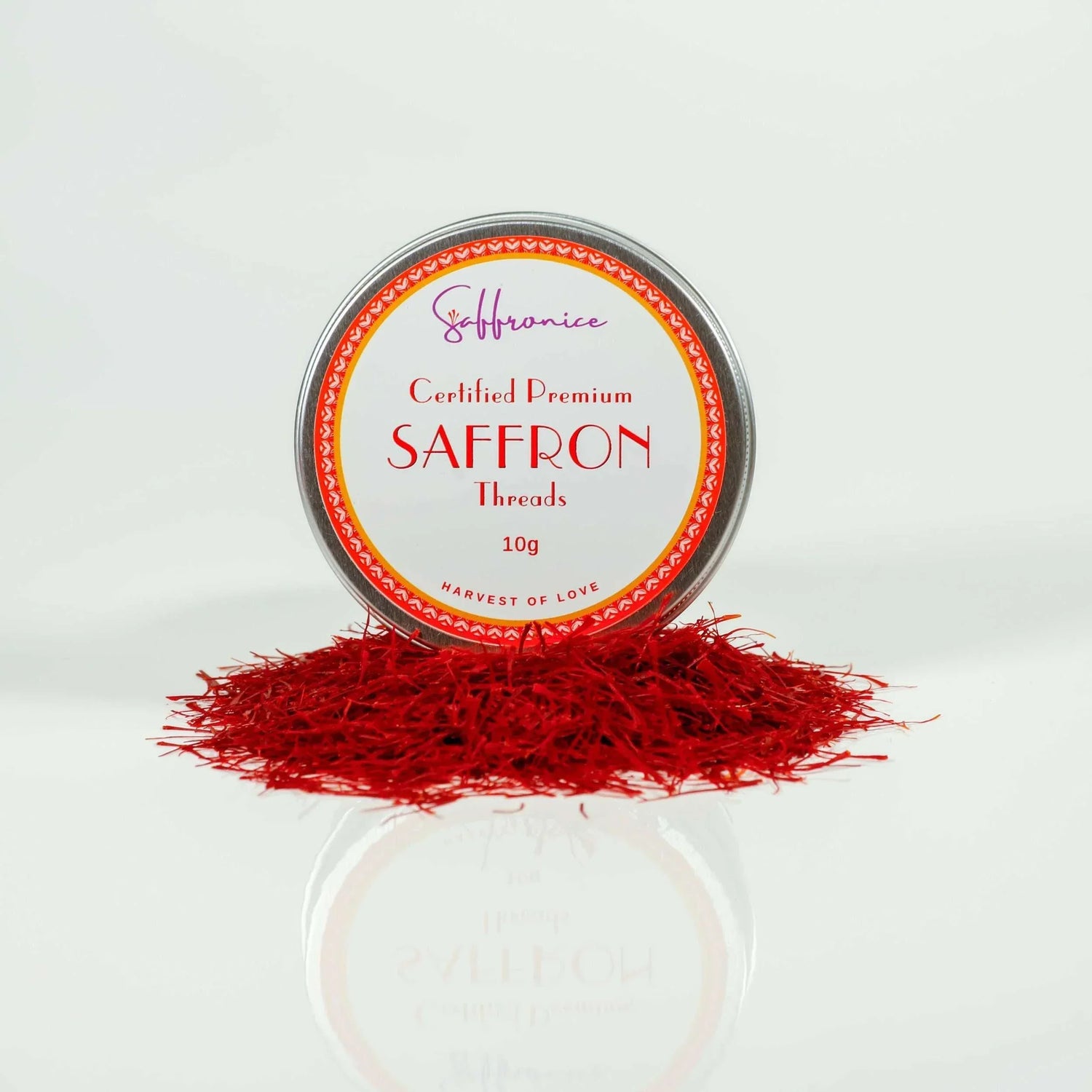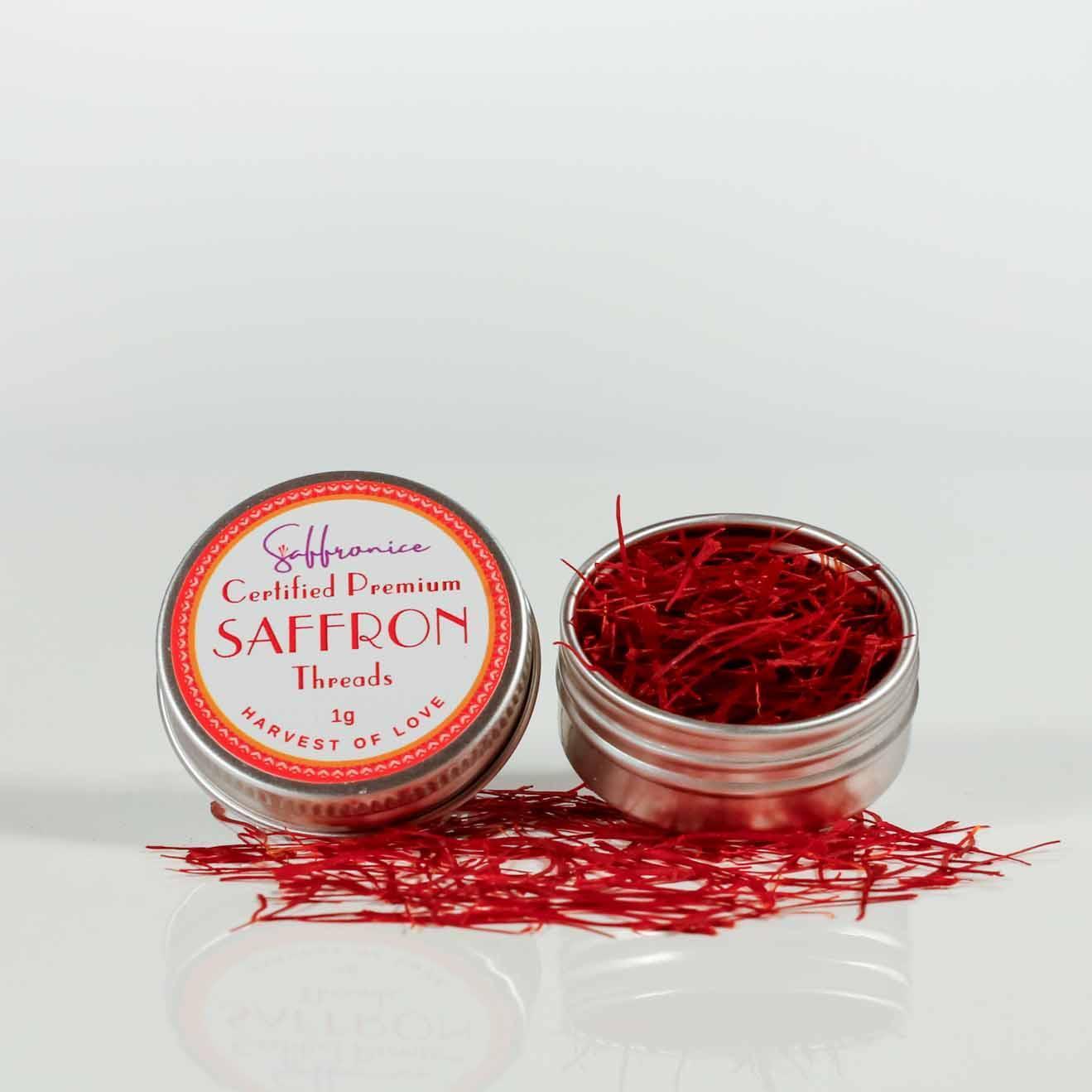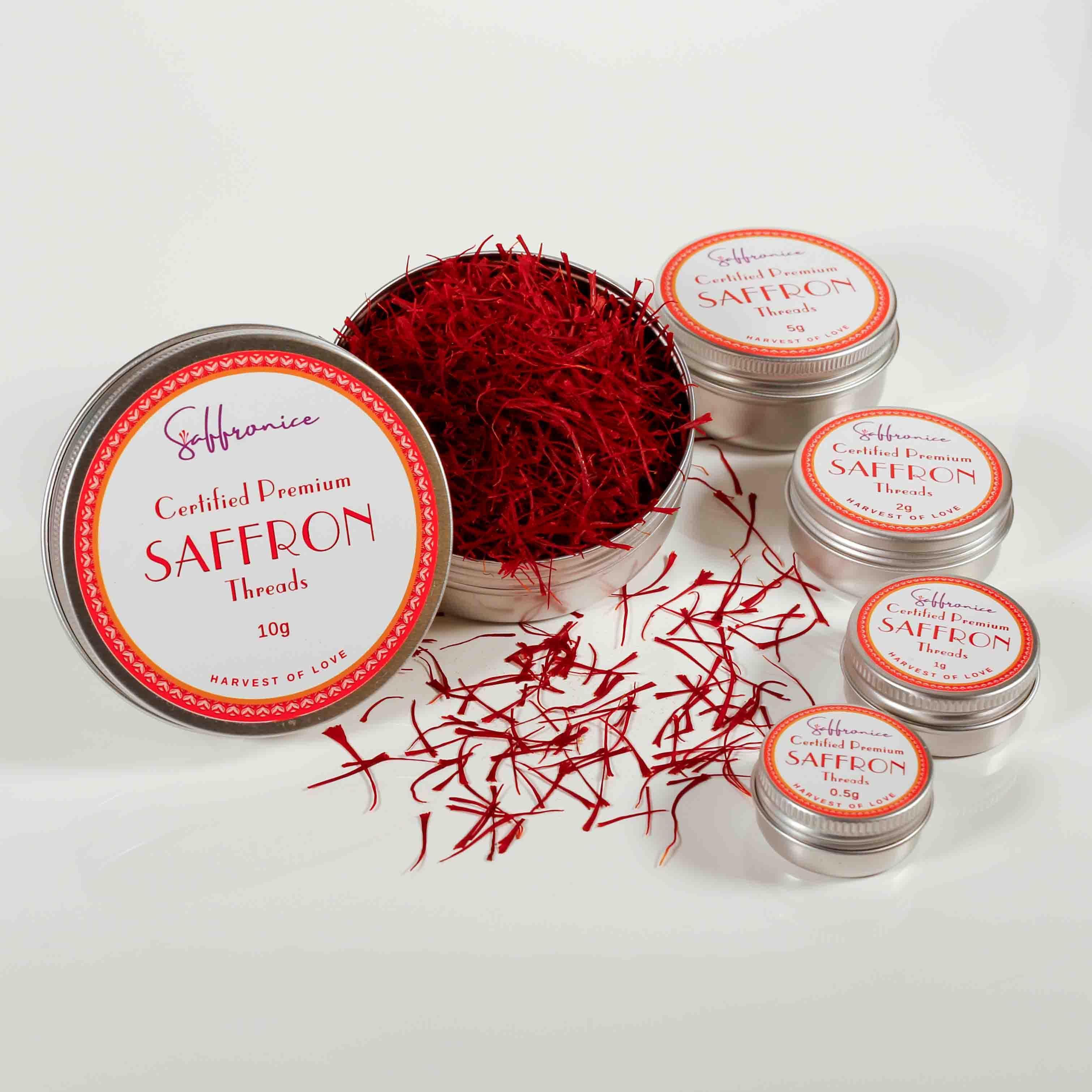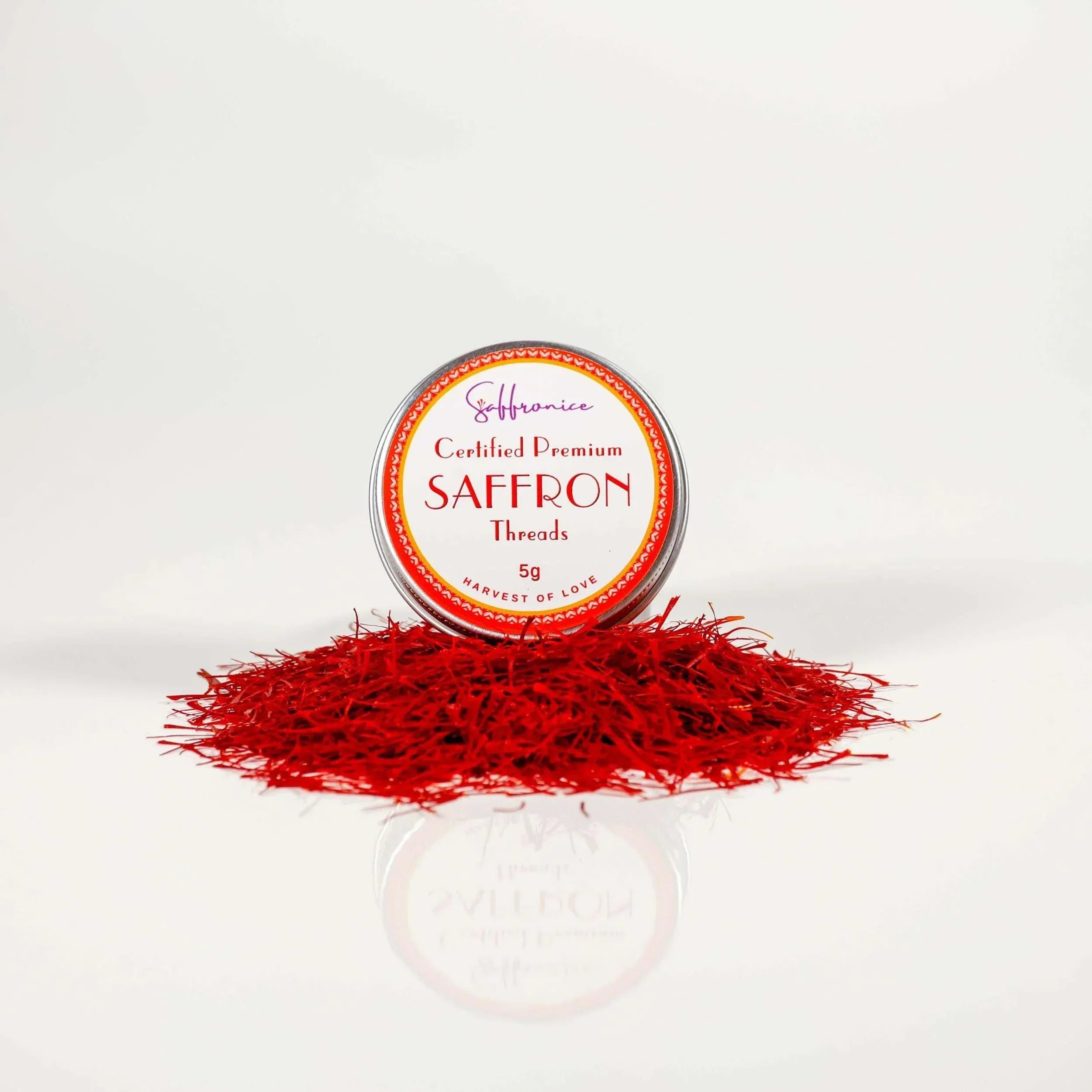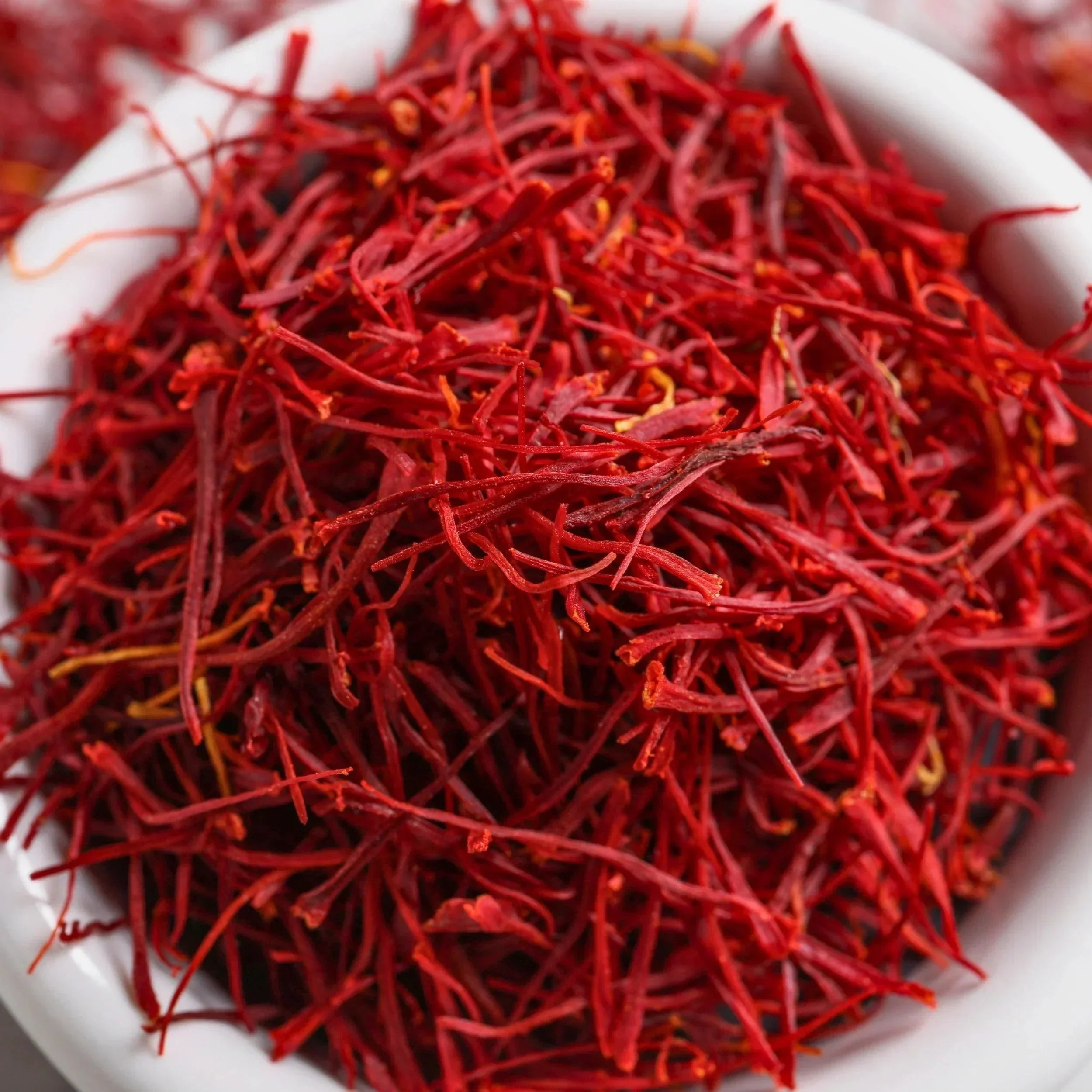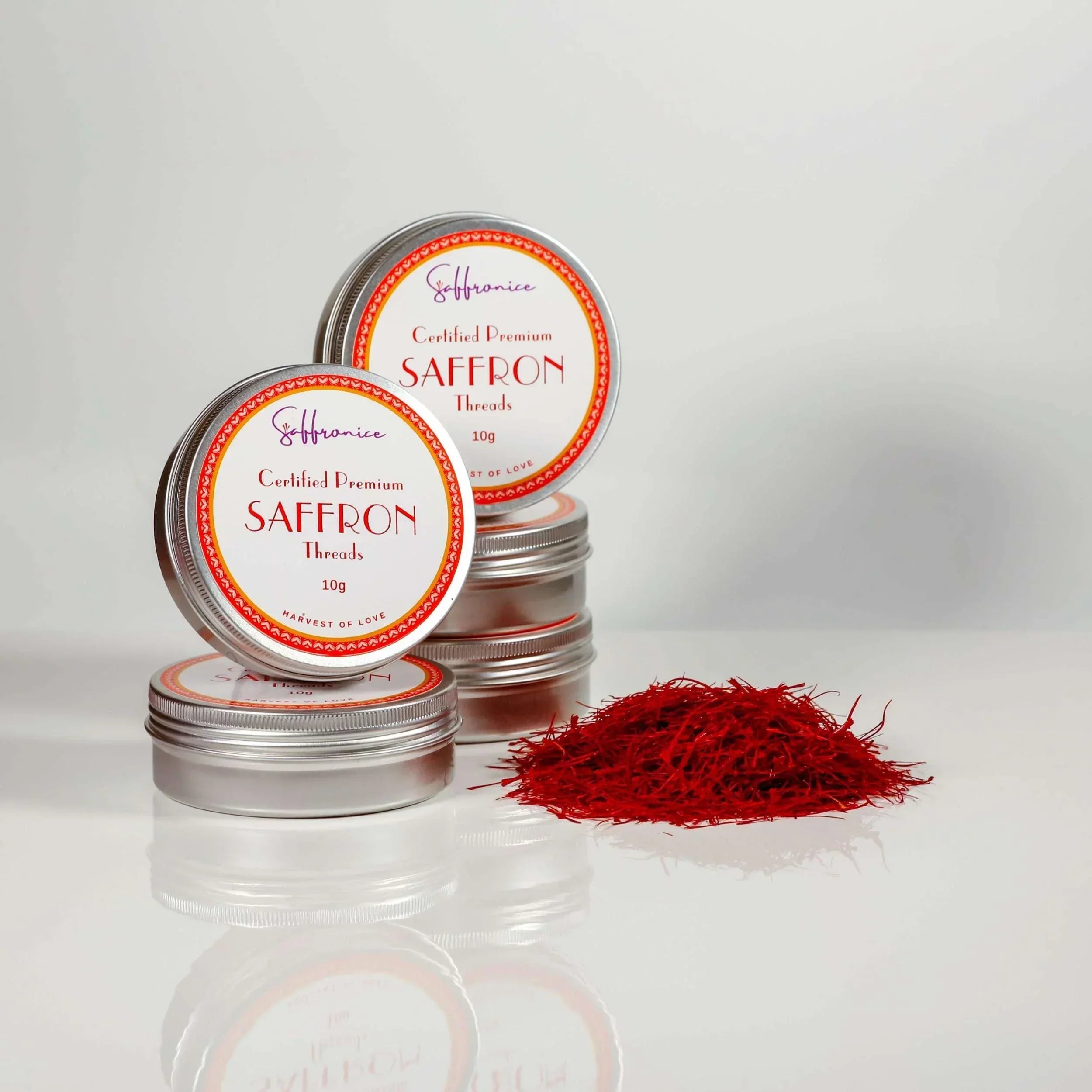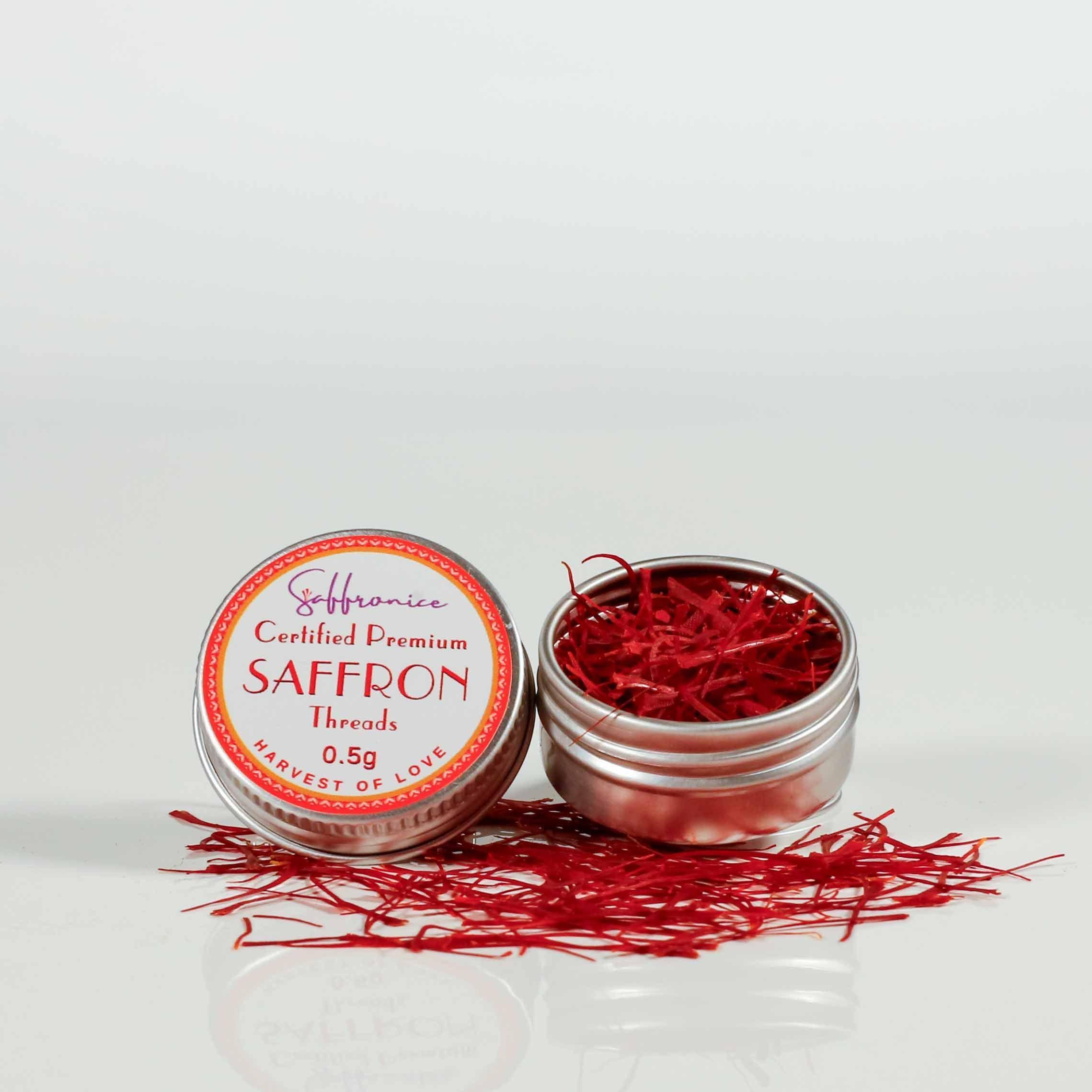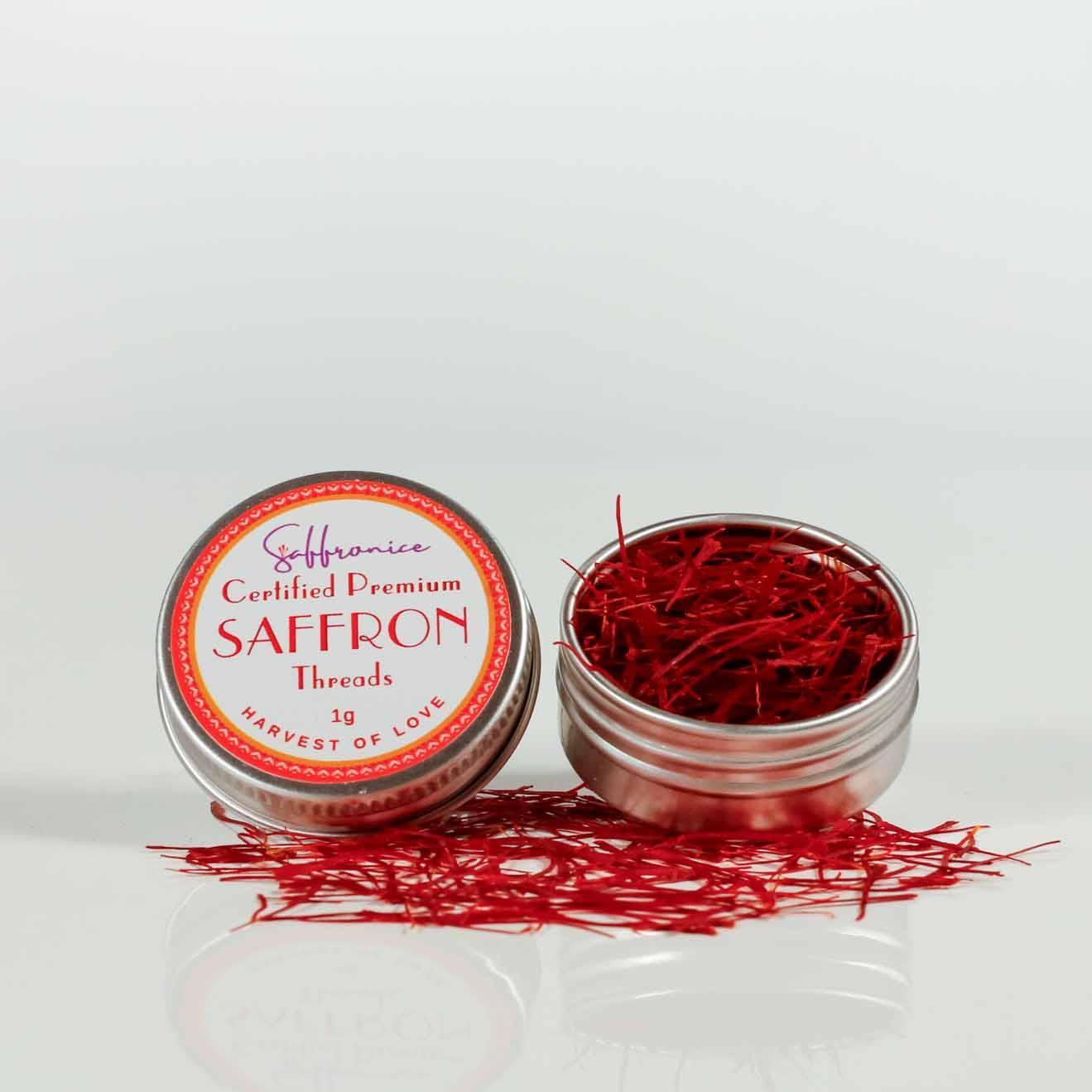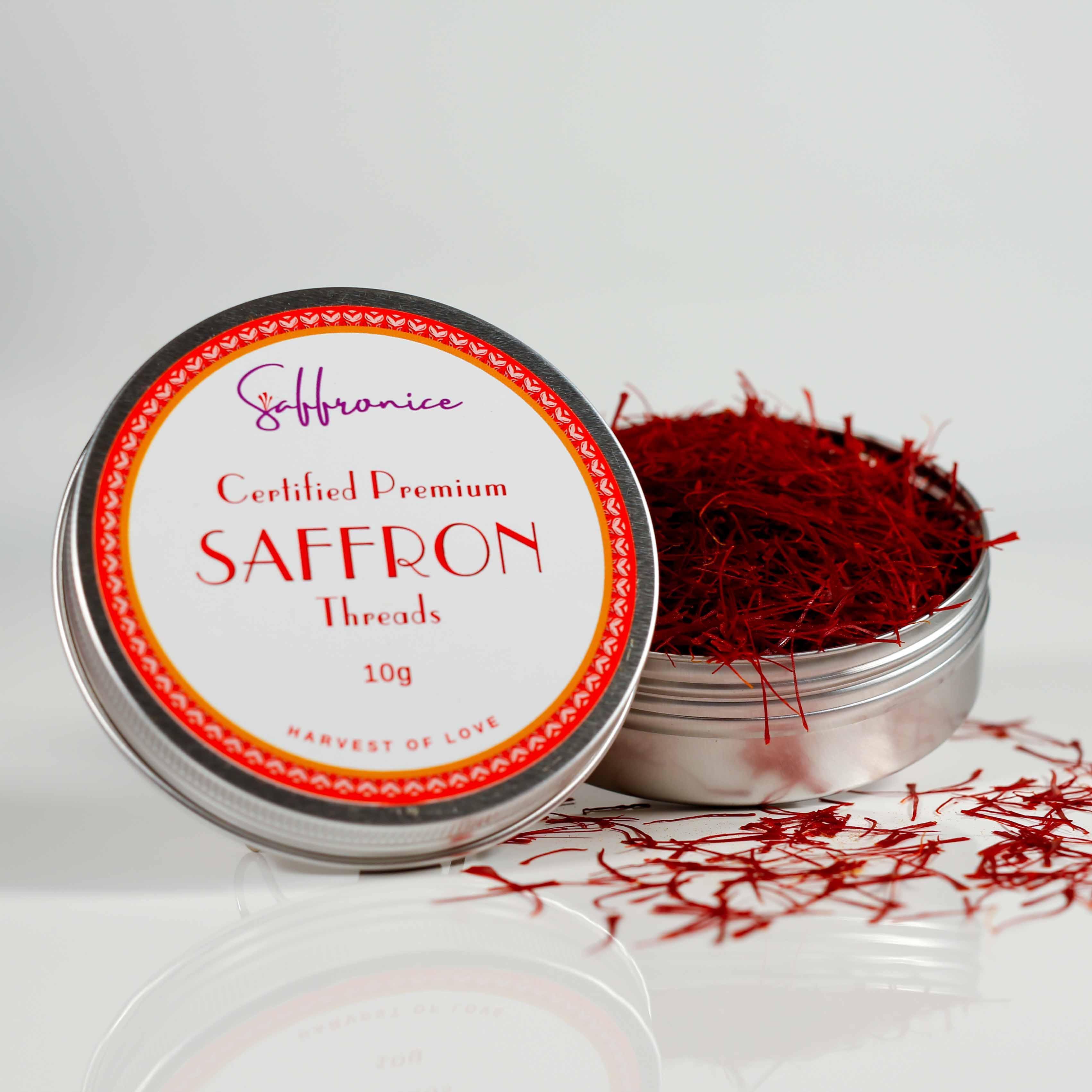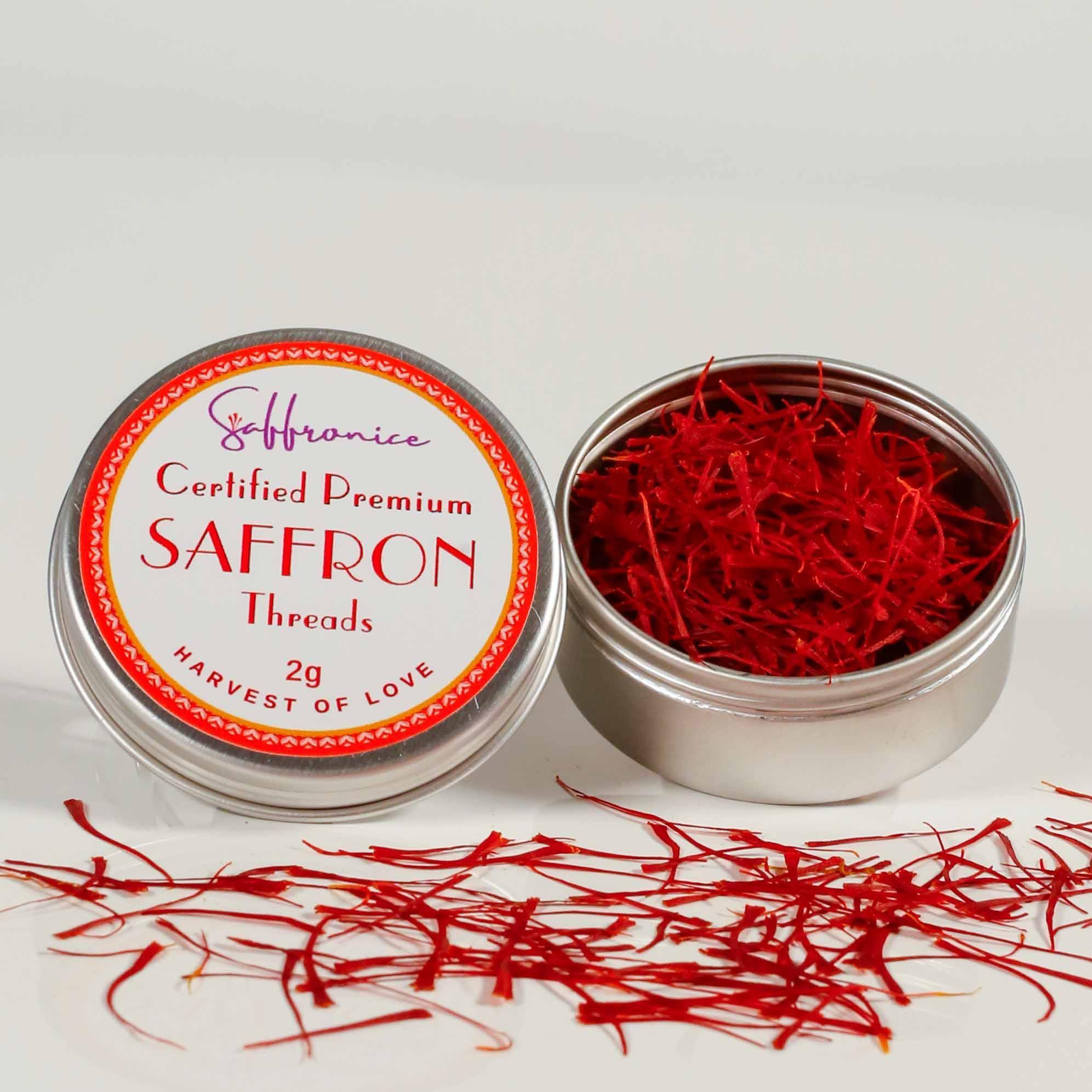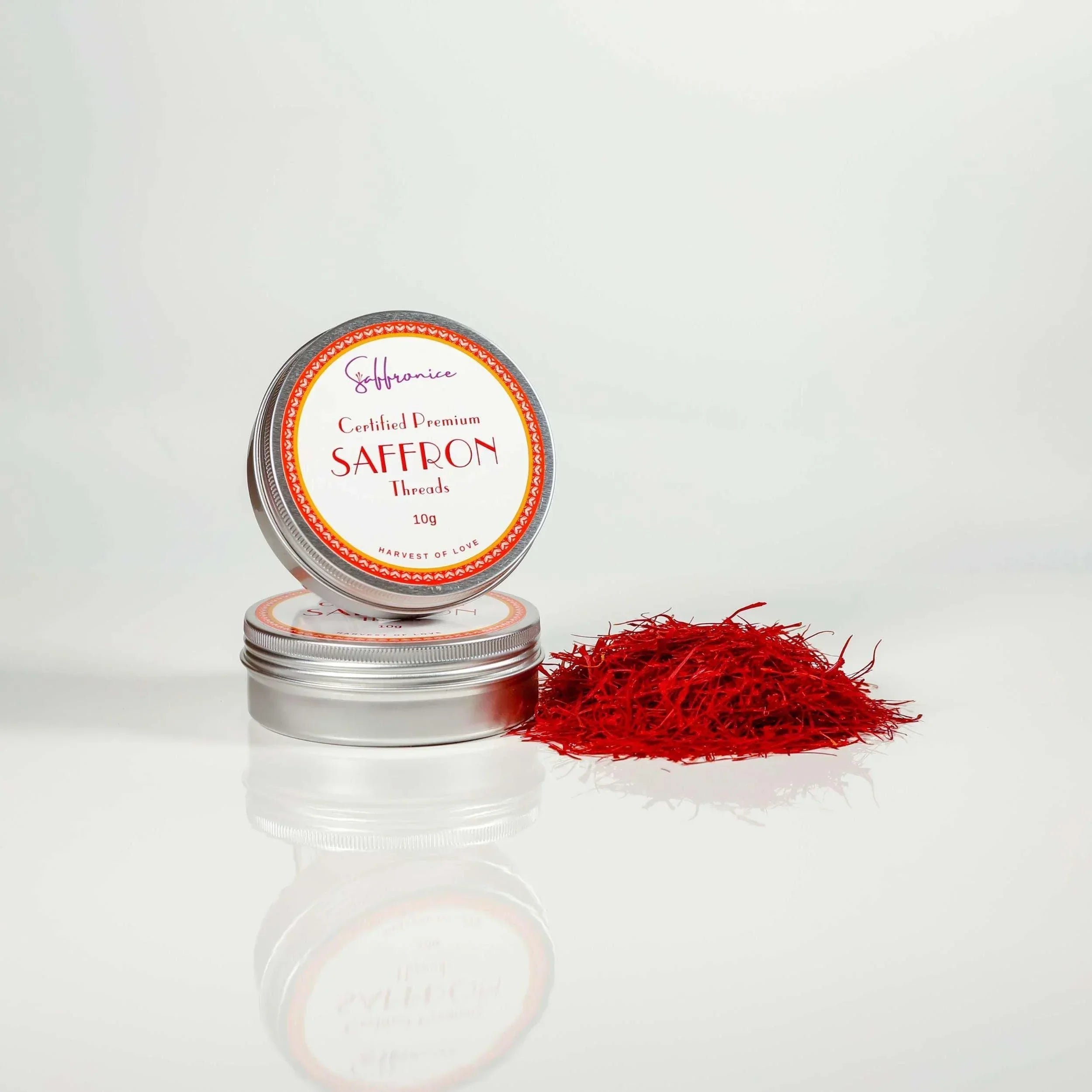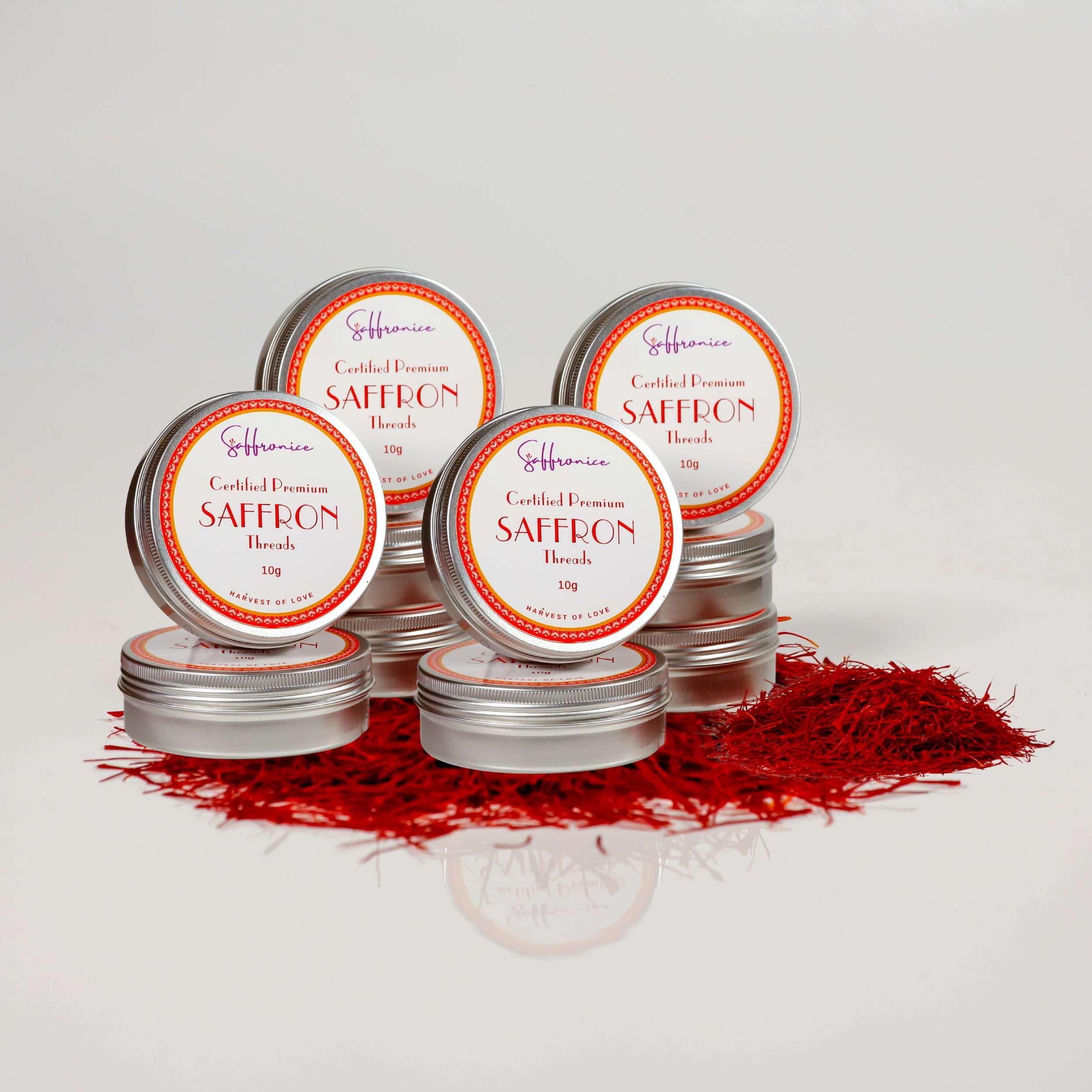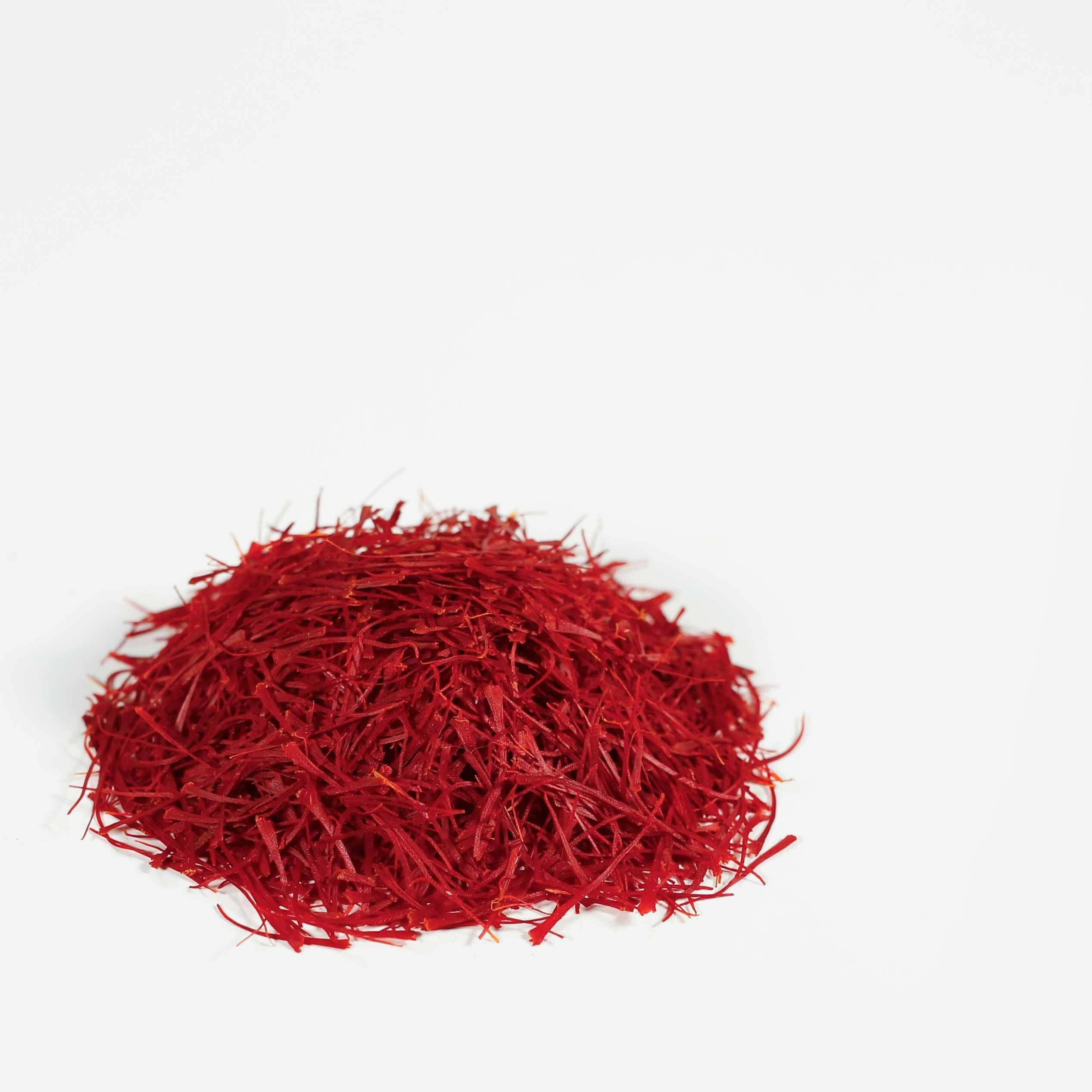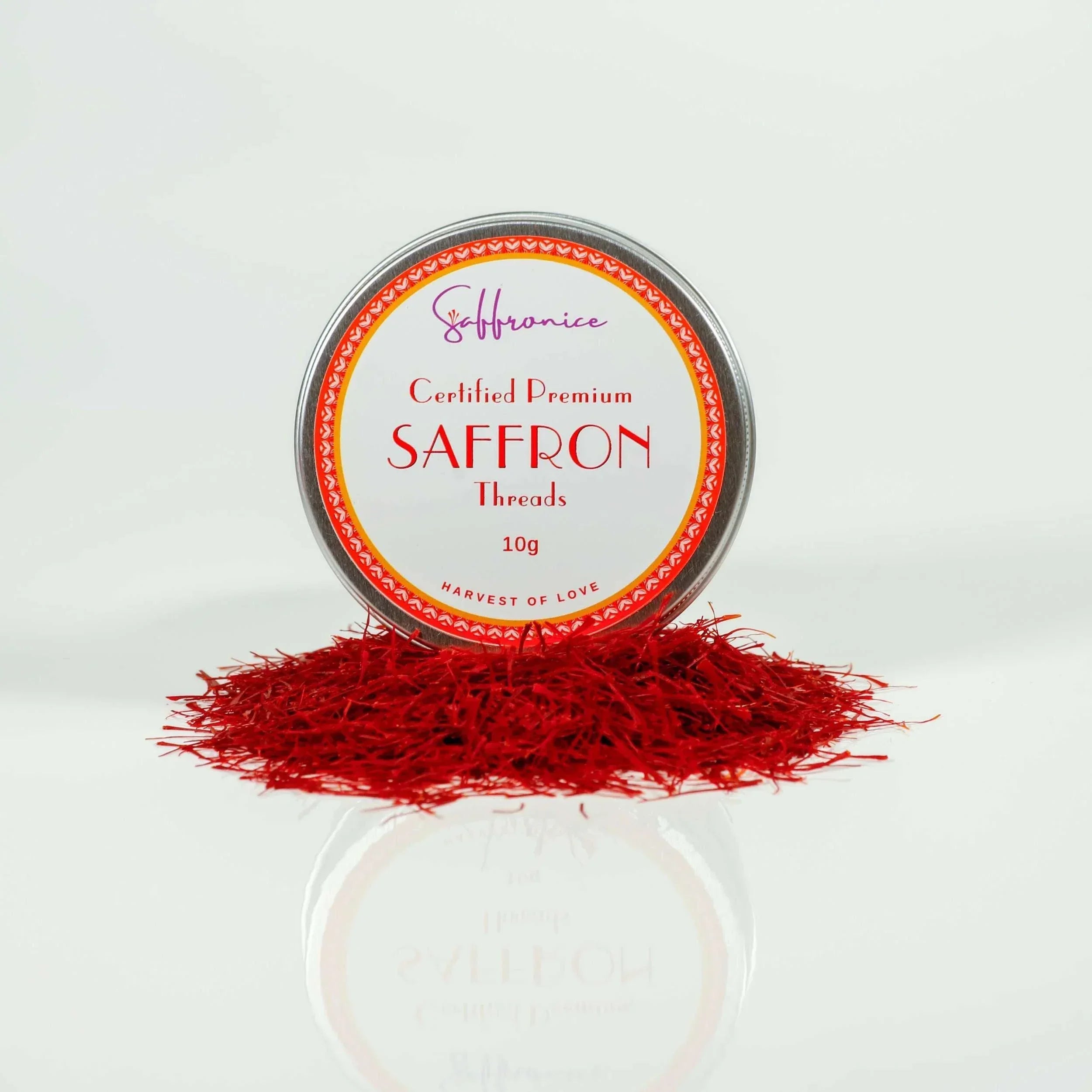Saffron powder, a well-known spice, is gaining popularity in both cooking and health communities for its distinct qualities and potential advantages. Saffron, which comes from the bright red threads of the Crocus sativus flower, has been cherished for centuries for its unique flavor and vibrant color.
Adding saffron to your daily meals can provide several benefits. Its distinct taste—a perfect combination of sweet, floral, and earthy flavors—enhances a wide range of dishes, from hearty stews to light desserts. In addition to its culinary appeal, saffron is also known for its potential health benefits. Packed with antioxidants, it is believed to promote mental well-being and heart health.
Finding ways to incorporate saffron powder into your meals not only enhances the overall taste but also allows you to reap its nutritional rewards. This versatile spice offers both deliciousness and wellness, making it a valuable addition to your cooking collection.

Understanding Saffron Powder
Saffron powder is a vibrant spice known for its distinct flavor and rich aroma. It comes from the Crocus sativus flower, commonly called the saffron crocus. This flower blooms in autumn and has striking purple petals. Each flower produces three red stigmas, which are carefully harvested to make saffron threads. These threads are then ground into a fine powder that can be easily added to various dishes.
The Labor-Intensive Process of Saffron Production
Producing saffron is a labor-intensive process, which is why it is one of the most expensive spices in the world. Here's how it works:
- Handpicking the Flowers: The delicate flowers are picked by hand at dawn when they are fully closed. This is important to maintain the quality of the stigmas.
- Separating the Stigmas: After collecting the flowers, each flower's stigmas are separated by hand. This task requires precision and care.
- Drying the Threads: Once separated, the saffron threads are dried using methods that enhance their flavor and color intensity. Traditional methods involve natural drying at room temperature, while modern production may use large dehydrators for efficiency.
These steps ensure that saffron retains its strong qualities, making it highly desirable in cooking and medicine.
The combination of its complex harvesting process and limited production explains why saffron remains a premium spice worldwide.
Health Benefits of Saffron Powder
1. Antioxidant Properties
Saffron powder is well-known for its high antioxidant content, which provides numerous health benefits. This vibrant spice contains several important antioxidant compounds, including crocin, safranal, and kaempferol, each contributing in its way to its healing potential.
The Role of Crocin
Crocin, the compound responsible for saffron's bright yellow color, has powerful antioxidant properties. It helps neutralize harmful free radicals in the body and protects cells from damage caused by oxidative stress. By doing so, crocin may lower the risk of chronic diseases like cancer and heart disease.
The Benefits of Safranal
Safranal, another antioxidant found in saffron powder, is formed when crocin breaks down during the drying process. In addition to giving saffron its distinct aroma, safranal may also have mood-boosting effects and improve cognitive function by reducing inflammation and oxidative stress in the brain.
The Impact of Kaempferol
Kaempferol, a flavonoid present in saffron, has anti-inflammatory and antioxidant properties. It can help lower inflammation levels and protect against cardiovascular diseases, further supporting overall health.
The combination of these antioxidants makes saffron powder a valuable addition to your diet. Regularly consuming it may strengthen your body's natural defenses against oxidative damage while promoting overall well-being. Adding saffron to your meals not only enhances their taste but also provides these beneficial compounds.
The interplay between crocin, safranal, and kaempferol shows why saffron is highly regarded as both a culinary delight and a health supplement. By incorporating this exquisite spice into your daily routine, you may enjoy its various benefits that go beyond just flavoring.
2. Mental Health Benefits
Saffron powder, known for its high antioxidant content, is gaining attention in mental health circles. Compounds like crocin, safranal, and kaempferol are not only powerful antioxidants but also have anti-inflammatory properties that may support mental well-being.
Depression Relief:
Research suggests that saffron can help alleviate symptoms of mild to moderate depression. Studies have shown its effectiveness similar to certain antidepressant medications, offering a natural alternative for mood regulation. The presence of safranal may play a crucial role in this process by influencing serotonin levels in the brain, which are often linked to mood disorders.
Sleep Quality Improvement:
In addition to improving mood, saffron may also enhance sleep quality. Regular consumption can lead to better sleep patterns, potentially due to its ability to reduce stress and anxiety. This improvement is especially beneficial for individuals struggling with insomnia or irregular sleep cycles.
Adding saffron powder to your daily diet could be a simple yet effective way to boost mental health. Whether used as a spice in cooking or brewed in herbal teas, the benefits of saffron are still being studied and valued for their overall positive impact on well-being.
3. Cardiovascular Health Support
Saffron powder, with its rich antioxidant content, offers potential benefits for cardiovascular health. The presence of key compounds such as crocin, safranal, and kaempferol plays a significant role in reducing inflammation and supporting overall heart health.
1. Cholesterol Reduction
Saffron's antioxidants may help in promoting healthy cholesterol levels. Studies suggest that these compounds can reduce low-density lipoprotein (LDL) cholesterol, often referred to as "bad" cholesterol, while maintaining high-density lipoprotein (HDL) cholesterol, or "good" cholesterol. This balance is crucial for preventing plaque buildup in arteries, thereby reducing the risk of heart disease.
2. Blood Sugar Management
Incorporating saffron into your diet might assist in blood sugar regulation. Research indicates that saffron may enhance insulin sensitivity and decrease blood glucose levels, making it a supportive ally in managing conditions like diabetes.
The anti-inflammatory properties of saffron further bolster its cardiovascular benefits. By mitigating inflammation, which is a known contributor to heart disease, saffron supports a healthier circulatory system. This combination of effects positions saffron powder as a promising addition to a heart-conscious diet.
Culinary Uses of Saffron Powder
1. Savory Dishes with Saffron Powder
Saffron powder's versatility shines in a variety of savory dishes, transforming meals with its vibrant color and distinctive flavor. Whether you're an experienced chef or an enthusiastic home cook, incorporating saffron into your cooking repertoire offers a world of delightful possibilities.
Paella Recipe
A classic Spanish dish, paella, is renowned for its rich flavors and aromatic appeal. Saffron powder plays a vital role in this culinary masterpiece:
Ingredients:
- 1 teaspoon saffron powder
- 2 cups arborio rice
- 4 cups chicken broth
- 1 pound shrimp, peeled and deveined
- 1-pound mussels, cleaned and debearded
- 1 red bell pepper, sliced
- 1 onion, chopped
- 2 cloves garlic, minced
- 1 cup peas
- Olive oil
- Salt and pepper to taste
Instructions:
- Heat olive oil in a large skillet or paella pan over medium heat.
- Add onion and garlic; sauté until translucent.
- Stir in the saffron powder and rice, coating each grain thoroughly.
- Pour in chicken broth; bring to a simmer.
- Add shrimp and mussels; cover and cook until seafood is cooked through.
- Mix in bell pepper slices and peas; season with salt and pepper.
- Allow paella to rest for a few minutes before serving.
This paella recipe highlights how saffron's unique flavor infusion enhances the dish's overall taste profile.
Risotto Recipe
Another classic dish that benefits from saffron's inclusion is risotto. This creamy Italian favorite takes on a new dimension with the addition of saffron powder:
Ingredients:
- 1 teaspoon saffron powder
- 1 cup arborio rice
- 4 cups vegetable broth
- ½ cup white wine
- 1 onion, finely chopped
- 2 cloves garlic, minced
- Parmesan cheese, grated (to taste)
- Olive oil
- Salt and pepper to taste
Instructions:
- Warm vegetable broth in a saucepan over low heat.
- In another pan, heat olive oil; add onion and garlic until soft.
- Stir in the arborio rice; cook until lightly toasted.
- Pour in white wine; stir until it has mostly evaporated.
- Gradually add warm broth one ladle at a time while stirring continuously.
- Mix in saffron powder halfway through the cooking process.
- Continue adding broth until the rice is creamy but firm to the bite.
- Finish with grated Parmesan cheese; season with salt and pepper.
The risotto recipe underscores how saffron not only enhances the visual appeal but also contributes to a complex depth of flavor.
Cooking techniques such as sautéing or blooming can further enhance saffron's flavor infusion in savory dishes. By gently heating saffron powder with other ingredients like onions or garlic at the beginning of your cooking process, you ensure its essence is fully released into your dish.
Exploring these recipes opens up new culinary avenues where saffron takes center stage, offering an unforgettable taste experience that elevates everyday meals into gourmet delights.
2. Sweet Delights Featuring Saffron Powder
Saffron powder's versatility shines brightly in the realm of desserts, where it transforms ordinary sweets into luxurious delicacies. From traditional recipes to modern interpretations, saffron-infused desserts offer a unique blend of aroma and taste that captivates the senses.
Traditional Recipes
- Persian Saffron Rice Pudding (Sholeh Zard): This aromatic dish combines rice, sugar, and rose water with saffron for a fragrant and colorful treat.
- Indian Saffron Kulfi: A rich and creamy frozen dessert, infused with cardamom and saffron, offering a delightful twist on classic ice cream.
Innovative Interpretations
- Saffron and Pistachio Cookies: These cookies pair the earthy notes of pistachio with the sweet floral undertones of saffron, creating a perfect balance.
- Saffron Panna Cotta: A modern take on the Italian classic, this dessert uses saffron to impart a golden hue and subtle flavor.
The cultural significance of saffron in sweet dishes extends across various cuisines, celebrated not just for its vibrant color but also its ability to enhance flavors. To maximize its potential in cooking applications, soak saffron threads in warm water or milk before incorporating them into your recipes. This step ensures optimal flavor infusion and allows the full essence of saffron to permeate your desserts.
By integrating saffron powder into both time-honored and contemporary sweets, you can enjoy an exquisite taste experience that is as diverse as it is delicious.
Choosing Quality Saffron Powder for Your Kitchen
When selecting saffron powder for your kitchen, understanding the ISO standards for saffron quality is crucial. The ISO grading system ranks saffron based on moisture content, foreign matter, and floral waste content. Grades range from Negin (Grade 1), known for its superior quality and vibrant color, to Style (Grade 5), which includes more floral waste.
Key Considerations:
-
Grading System: Familiarize yourself with grades like Negin, Sargol, Pushal, Dasteh, and Style to make an informed purchase.
-
Adulteration Risks: Saffron is one of the most adulterated spices. Common practices include mixing with turmeric or dyed cornsilk. Always verify the authenticity of the saffron powder by checking for a strong aroma and deep red color.
Tips for Purchasing Genuine Saffron:
-
Source Reputable Vendors: Select sellers who provide transparency about their sourcing practices and offer guarantees on quality.
-
Pricing Indicators: While price can reflect quality, it isn't always linear. High-quality saffron tends to be expensive due to its labor-intensive harvesting process. Be cautious of prices that seem too low compared to market rates.
-
Packaging and Storage: Look for saffron stored in light-proof, airtight containers to preserve its potency. Proper packaging helps safeguard against oxidation and loss of flavor.
-
Check Lab Results: Opt for suppliers who provide lab results indicating crocin levels (color), safranal levels (aroma), and picrocrocin levels (flavor), ensuring alignment with ISO standards.
By paying attention to these factors, you can confidently select high-quality saffron powder that enhances both the flavor and nutritional value of your dishes.
Conclusion: Embrace the Power of Saffron Powder in Your Daily Diet
Adding saffron powder to your daily meals opens up a world of delicious flavors and potential health benefits. This exquisite spice not only enhances taste but also adds vibrant color and aromatic richness to your dishes.
Here are some tips on how to incorporate saffron powder into your diet:
- Start Small: Introduce saffron powder into recipes you already love. A pinch of saffron can elevate rice, soups, or even baked goods.
- Explore New Dishes: Venture into new culinary territories and experiment with dishes that highlight saffron's unique qualities.
- Choose Quality: Ensure you select high-quality saffron powder to fully appreciate its potent aroma and vivid hue. To understand more about sourcing this luxurious spice, check out this comprehensive guide on saffron powder.
Whether you're attracted by its health benefits or its versatility in cooking, saffron powder promises to enhance your culinary experience.


